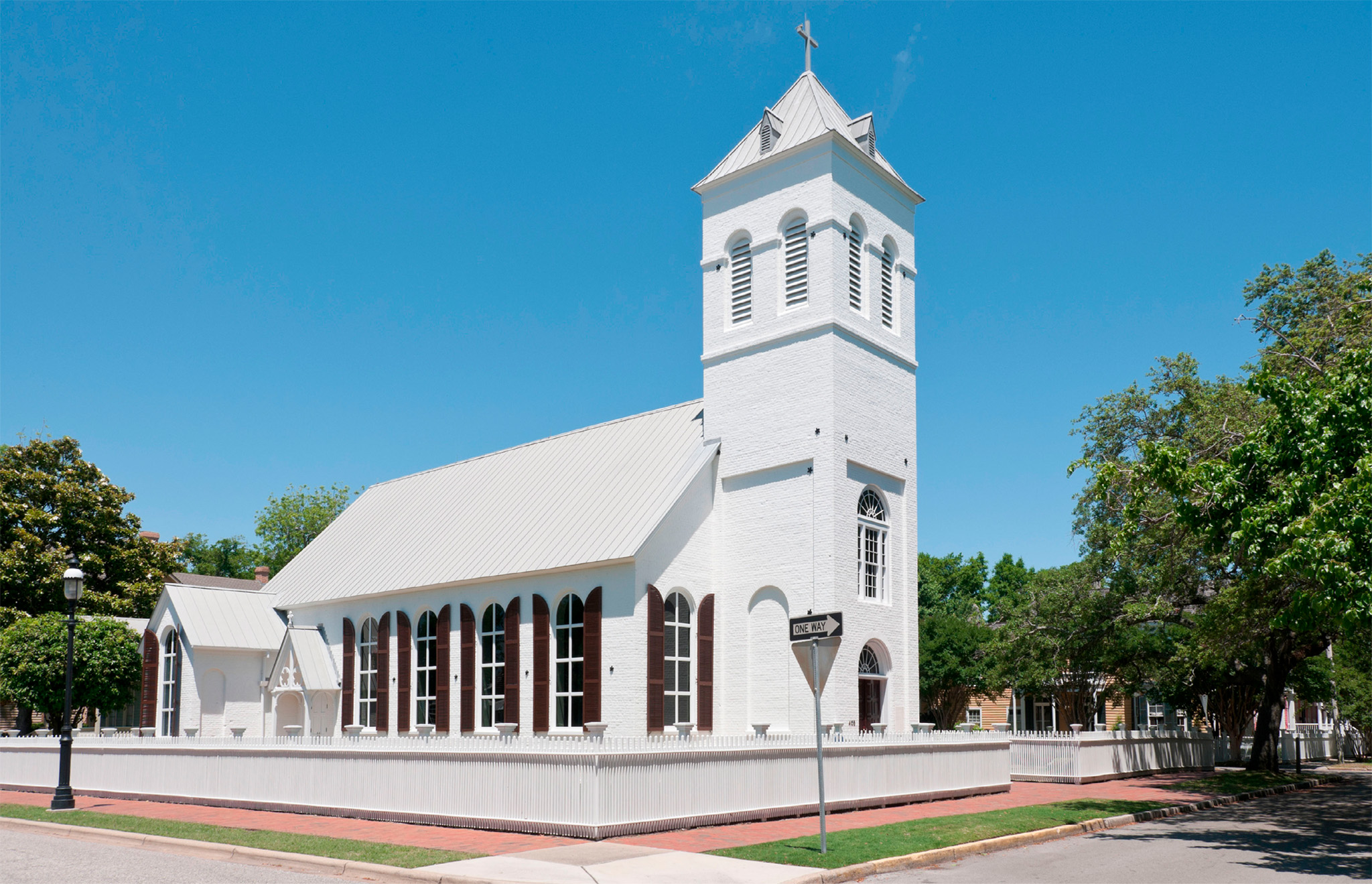This waterfront city was first settled by Spanish colonists in 1559. Much of the current city dates from a boom in the 1800s; several historic districts provide the most interesting areas to explore in Pensacola. While downtown is the main focus for sightseeing, the barrier island of Pensacola Beach, linked to the mainland by two bridges, is a pleasant place to stay.

t Colorful buildings in the Seville Quarter, one of Pensacola’s historic areas
Experience The Panhandle

n Double-tap image to read the labels
This museum is laid out in the former City Hall, an imposing Spanish Renaissance Revival building. The founder’s eclectic collections include West Florida memorabilia, artifacts from Spanish shipwrecks, and weird and wonderful oddities from all over the world. These range from arrowheads and a “shrunken head” from pre-Columbian Central America, to a 1930s telephone exchange and old Coca-Cola bottles.
The museum contains well thought-out historical displays and dioramas illustrating points along Pensacola’s Colonial Archaeological Trail, which links remains of fortifications dating from 1752–1821. One of the exhibits chronicles over 450 years of Pensacola history.
The cells of the old city jail, complete with steel-barred doors, have taken on a new life as whitewashed galleries for this museum. Frequently changing exhibitions draw on the museum’s broad-based collections, which include pre-Columbian pottery, 19th-century satinware glass, and Roy Lichtenstein’s Pop Art.
Housed in an 1885 building first known as the Gulf Saloon, this museum, run by the West Florida Historic Preservation, Inc., offers an interactive learn-ing experience of Pensacola history, showcasing military and multicultural histories plus those of the maritime and lumber industries. Child-friendly exhibits include the Panton Trading Post, Lavalle Cottage, the Fort, Native American Village, and Kiddie Corral. The second floor houses artifacts geared toward older children and adults, but also offers a rail set, building blocks, and dress-up clothes that younger kids will enjoy.
Did You Know?
The average commute time in Pensacola is 19 minutes.
This historic district (which stretches for about ten blocks from Wright Street, north of Pensacola Historic Village) features elegant late 19th- and early 20th-century houses. They were built on the site of former British and Spanish forts, and even now cannon-balls are occasionally dug up in their gardens. All the houses are privately owned. Among the most striking is the verandah-fronted McCreary House on North Baylen Street, close to the intersection with De Soto Street.

t The pristine exterior of Old Christ Church, which is now home to a museum
This collection of museums and historic houses is located in Pensacola’s oldest quarter, called the Historic Pensacola Village. You can enjoy an unhurried stroll through the village’s streets, which offer a taste of the city as it was in the 19th century.
For a more in-depth look, take one of the guided tours that depart twice daily from Tivoli House on Zarragossa Street. In tourist season, tour guides liven up proceedings by dressing in period costume. The tours visit the simply furnished French Creole Lavalle House (1805) and the gracious Dorr House (1871), the Old Christ Church (1832), and the Lear-Rocheblave House (1890), among others. A single ticket, available from Tivoli House, covers the tour and entrance to all village properties for one week.
This ticket will be required to visit the Museum of Commerce and Museum of Industry. Housed in a late 19th-century warehouse, the former museum, on Church Street, provides an informa-tive introduction to Pensacola’s early development. Exhibits cover brick-making, fishing, and the lumber trade.
Forming a backdrop to Zarragossa Street’s Museum of Commerce is a Victorian street scene complete with reconstructed stores including a printer’s shop with a working press and a music store.
Overlooking leafy Seville Square is Old Christ Church, built in 1832, and one of the oldest churches in Florida still standing on its original site.
